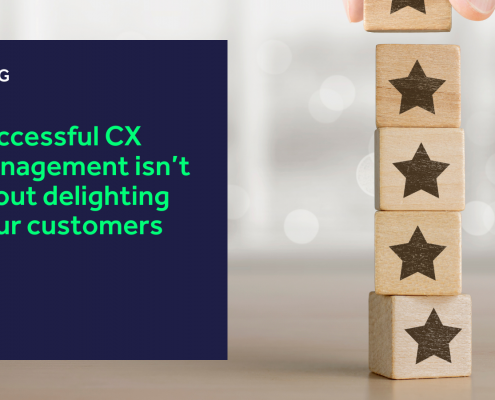By Prof. Dr. Phil Klaus, Leading global CX Strategist and Advisor and Chairman at the PK Customer Experience Institute
Nine out of ten businesses said their Customer Experience programs provided no profitability for them whatsoever.
So where are they going wrong?
Why do so many CX Programs Fail?
When we look at what drives profit in retail, the way retailers measure Customer Experience has been causing problems. Previous methods, namely the NPS (Net Promoter Score), provide little to no value here. They have no direct correlation to profit.
While these NPS scores are an encouraging sign that retailers are making efforts to increase customer satisfaction, I urge CX Managers to think back to the last time they pressed a button saying they would recommend a product or service. Did you recommend that service in the end? And more to the point, did your recommendation create a profit for that business?
The fact is that the current customer satisfaction measures are unreliable indicators of profitability. Retailers need to work with their customers to define the terms of customer satisfaction. And they need to do it in a way that is intrinsically linked to profit.
This is not an easy task, because there is no silver bullet – Customer Experience is complex. However, for those Vanguard businesses who embrace this complexity, we consistently see them outperform competitors with an average of 600% more profitability.
First, fix what is broken
Turning a profit from delighting customers is a complex business – but there’s one element of customer experience which is very simple, and much more powerful.
What we as customers want most is to avoid bad experiences. This is what drives our behavior. CX is not about delighting and wowing the customer. This is one of the biggest misconceptions in retail. You can wow and delight your company to bankruptcy without making any real progress.
Positive word of mouth, on average, influences just a few people. Conversely, negative word of mouth can influence hundreds, meaning you need hundreds of great customer experiences to compensate for just one bad experience.
We make choices based on who upsets us, not who delights us. So, first you must fix what is broken – and this is actually much easier to do, because your customers will tell you what to fix.
Think about how much easier it is to meet the expectation of fixing something. Now think about how hard it is to delight somebody.
By telling customers you aim to delight them and exceed their expectations, you raise expectations and give them a greater chance to be dissatisfied. Instead, you should be telling customers, “you’re important to us, and whatever bothers you, we’re going to fix”.
There’s a saying in the UK: “You can’t put lipstick on a pig”, at the end of the day, it’s still a pig. Businesses can’t simply patch up something that’s broken with “delight”.
Efforts are far better spent starting from the bottom to get rid of negative customer experiences. So, before you throw all your budget and time into delight, first ask your customers “What needs fixing?”
Then fix it.
 https://www.k3btg.com/wp-content/uploads/2022/01/Virtual-fitting-rooms.png
900
1600
Jordan Heal
https://www.k3btg.com/wp-content/uploads/2022/03/K3_Master_Colour_RGB.svg
Jordan Heal2022-01-26 09:33:042025-02-21 14:58:31Virtual fitting rooms: a glimpse into the store of the future
https://www.k3btg.com/wp-content/uploads/2022/01/Virtual-fitting-rooms.png
900
1600
Jordan Heal
https://www.k3btg.com/wp-content/uploads/2022/03/K3_Master_Colour_RGB.svg
Jordan Heal2022-01-26 09:33:042025-02-21 14:58:31Virtual fitting rooms: a glimpse into the store of the future

